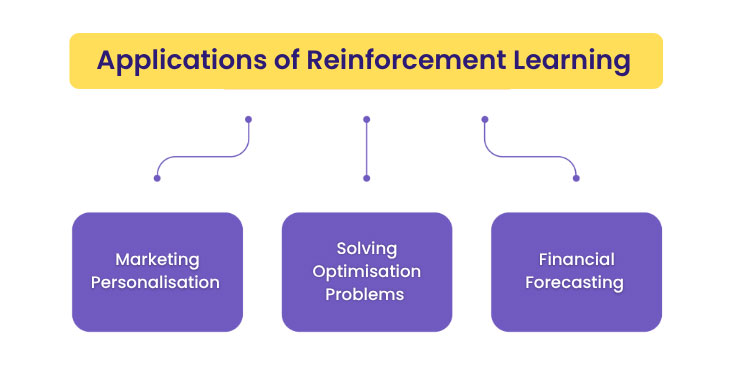Did you ever think about how old this field is and the history of data science? The term “Data Science” is the study of anything that is related to the data. With the emergence of the internet, the amount of data produced has been more than expected in the past few years. Did data science emerge only after the internet came?
The answer is NO.
This term has been there for more than 50 years, and with the advancement of technology, the boom in this field significantly exploded in the past 5-10 years.
To understand this, let us take you back to 50 years in history of data science, where it all started.
According to Harvard Business Review, Data Scientist is the SEXIEST JOB OF 21ST CENTURY. The salaries of data professionals are relatively higher than other job profiles. If you’re interested in pursuing your career as a data scientist but have no idea about where to start, you can start by joining a FREE DEMO CLASS by Console Flare where you’ll get all the ideas about the basics of data science, how it work, what tools you need to learn, the salaries for different job profiles in data science and much more.
History of Data Science
Let us start with the timeline where the term “Data Science” was introduced for the very first time.
The history of data science dates back to more than 50 years in the 1960s. Introduced as a field of study for massive data, this term came by combining statistics and computer science to import, understand, process, mine, clean, and create reports based on data.
You’re reading the article, History of Data Science: A Glorious Trip Back in Time.
Data Science Timeline
1962
In 1962, an American Mathematical Statistician named John Tukey published a paper titled “The Future of Data Analysis.”

Published: March 1962
Digital Object Identifier: 10.1214/aoms/1177704711
In his paper, he explained the phenomenal shift to hit the world of statistics. He said, “For a long time, I thought I was a statistician, interested in inferences from the particular to the general. But as I have watched mathematical statistics evolve, I have had cause to wonder and doubt.
I have come to feel that my central interest is in data analysis… Data analysis, and the parts of statistics which adhere to it, must…take on the characteristics of science rather than those of mathematics… data analysis is intrinsically an empirical science… How vital and how important… is the rise of the stored-program electronic computer? In many instances, the answer may surprise many by being ‘important but not vital,’ although in others, there is no doubt but what the computer has been ‘vital.’”
You’re reading the article, History of Data Science: A Glorious Trip Back in Time.
1974
In 1974, a Danish Computer Science pioneer named Peter Naur authored Concise Survey of Computer Methods, where the term “Data Science” has been used freely in many places. He also contributed to creating the language ALGOL 60.
1977
In 1977, John Tukey published a book titled “Exploratory Data Analysis” arguing that more emphasis should be placed on using data to suggest hypotheses to test and that Exploratory Data Analysis and Confirmatory Data Analysis “can—and should—proceed side by side.”
You’re reading the article, History of Data Science: A Glorious Trip Back in Time.
1977
In 1977, International Association for Statistical Computing (IASC) was founded as a branch of the International Statistical Institute (ISI).
The purpose behind this was to connect modern computer technology with the traditional statistical methodology and turn data into useful information.
1989
In 1989, co-founder of KDD Conferences, Gregory Piatetsky-Shapiro, a data scientist, chaired the first Knowledge Discovery in Databases (KDD) workshop that became the annual ACM SIGKDD Conference on Knowledge Discovery and Data Mining (KDD) in 1995.
You’re reading the article, History of Data Science: A Glorious Trip Back in Time.
1994
On September 5, 1994, media house Business Week published an article, Database Marketing.
1996
In 1996, for the first time, the International Federation of Classification Societies (IFCS) conference was named “Data science, classification, and related methods.”
1997
In 1997, Professor C. F. Jeff Wu addressed for statistics to be renamed data science and statisticians to be renamed data scientists in his inaugural lecture at the University of Michigan.
1999
In 1999, a Professor of Management at Tel Aviv University, Dr. Jacob Zahavi, addressed the need for new data mining tools to handle the massive amount of data in his article Mining Data for Nuggets of Knowledge.
You’re reading the article, History of Data Science: A Glorious Trip Back in Time.
2001
Data Science: An Action Plan for Expanding the Technical Areas of the Field of Statistics was published by William S. Cleveland.
Software-as-a-Service (SaaS) was introduced for the very first time.
Statistical Modeling: The Two Cultures was published by Leo Breiman.
2002
Launch of Data Science Journal
2003
Launch of Journal of Data Science
2006
Hadoop 0.1.0 (an open-source, non-relational database) was released.
2008
Data Scientist became a buzzword.
2011
Job opportunities for data scientists increased by almost 15,000%.
2012
Harvard Business Review published Data Scientist: The Sexiest Job of the 21st Century
You’re reading the article, History of Data Science: A Glorious Trip Back in Time.
In the past 10 years, the invention of mobile devices (android, iOS, and Windows) has caused colossal data creation. It has become challenging for companies to process and perform the analysis.
With the release of high-end tools like NumPy, Pandas, Matplotlib, Seaborn, PySpark, and Power BI, the world of data analytics has changed significantly.
All industries today harness data’s power for their business growth and revenue generation. The opportunities in the data field are increasing exponentially, and the salaries offered by companies to data professionals are almost better than any other technology job.
If you’re willing to pursue your career as a data analyst, you can explore this amazing course by Console Flare where you can become ready for the profile of a data analyst within 3 months.
Python For Data Analytics Certification Program
Hope you liked reading the article, History of Data Science: A Glorious Trip Back in Time. Please share your thoughts in the comments section below.







3 thoughts on “History of Data Science: A Glorious Trip Back in Time”